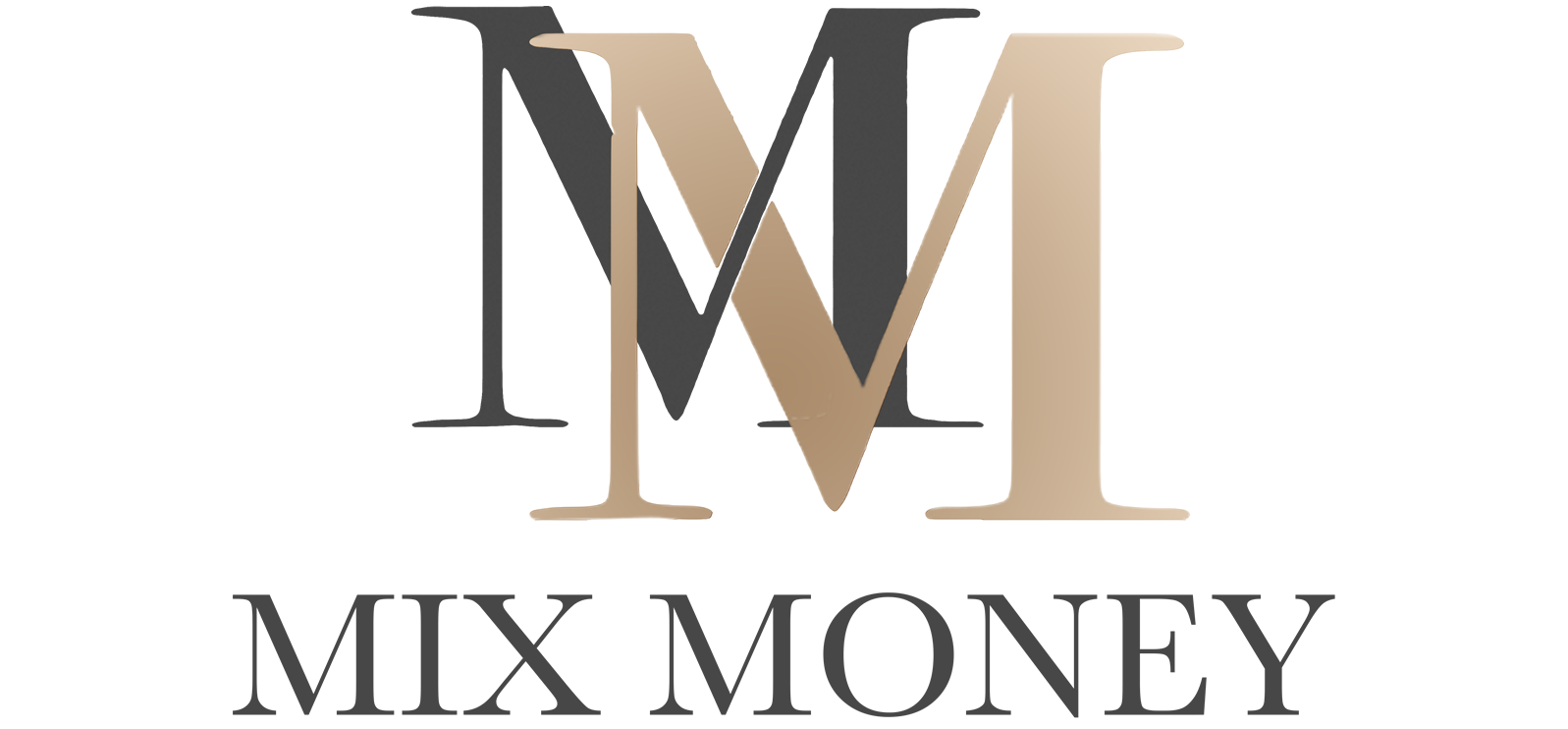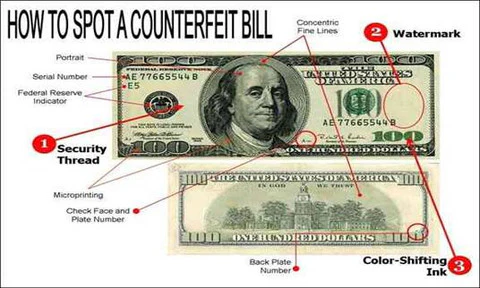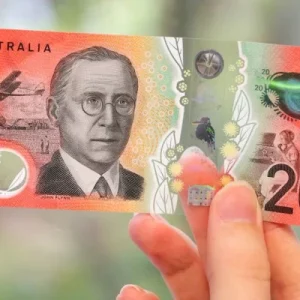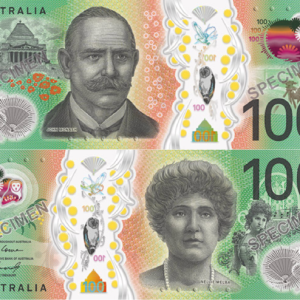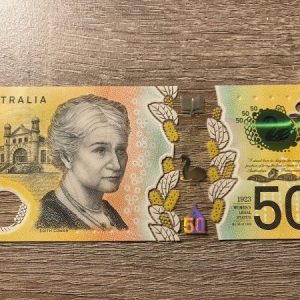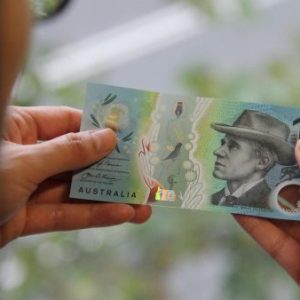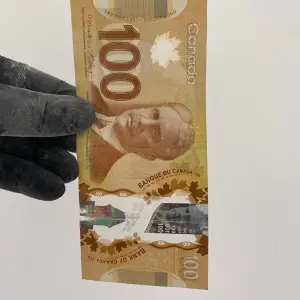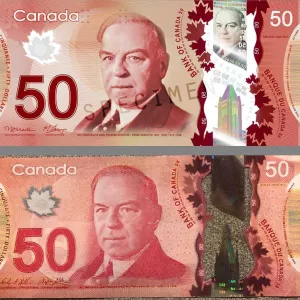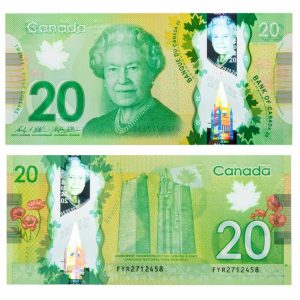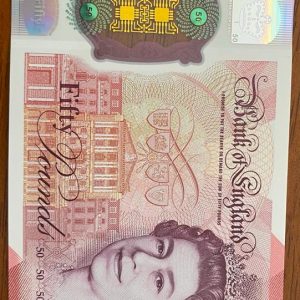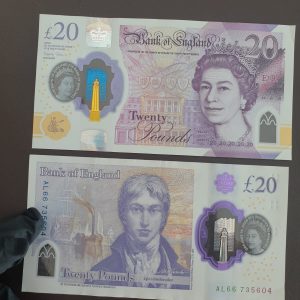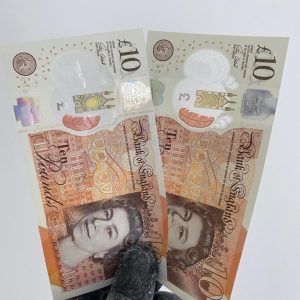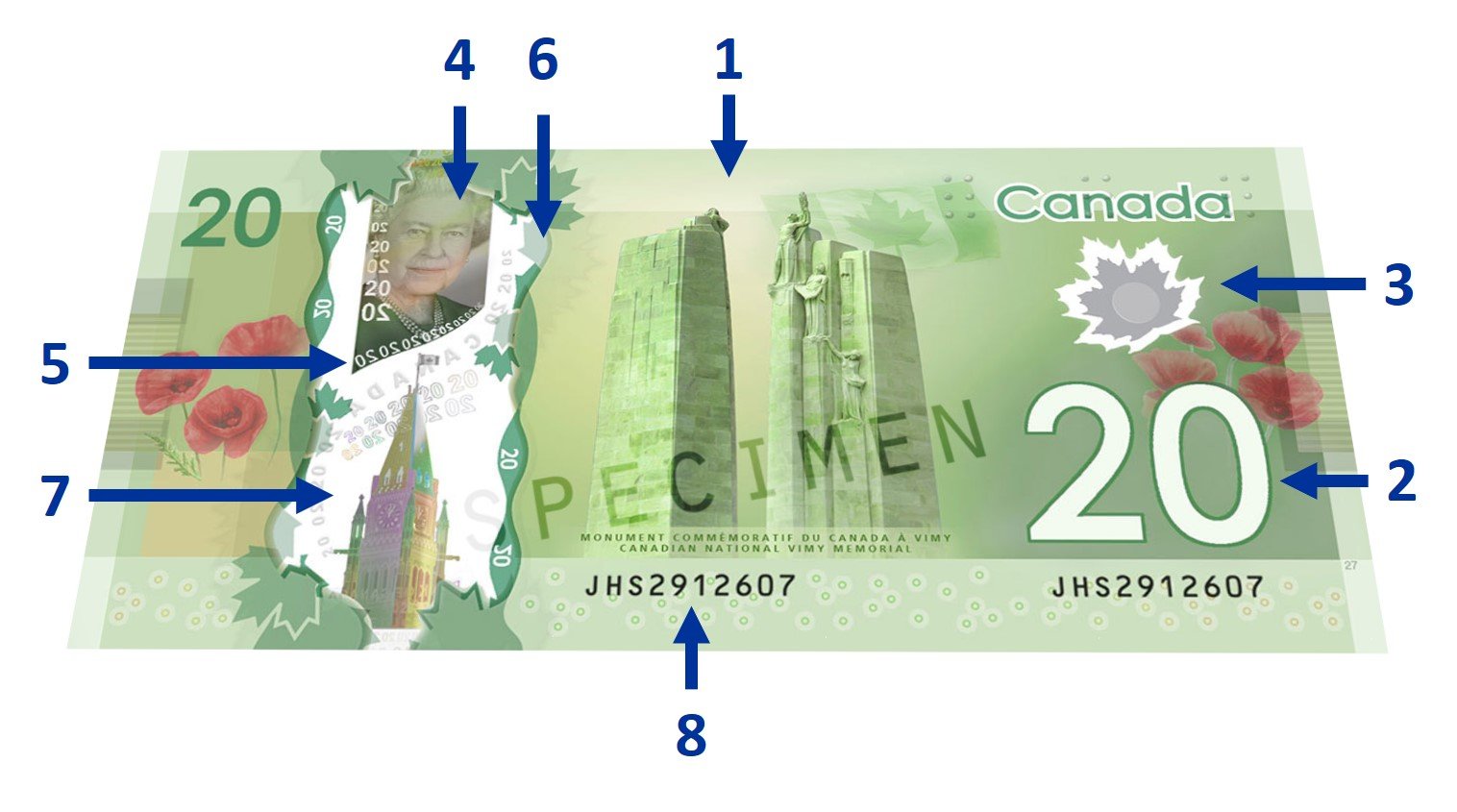
The image of the $20 bill above, which belongs to the Frontiers series, was taken from the bank of Canada’s website.
1. Texture
Genuine money has a distinctive texture. Canadian bills are printed on a special polymer paper that feels smooth and like plastic. If you touch a bill and it doesn’t feel right or familiar, it might be a counterfeit. Examine it more closely for further signs of counterfeiting.
Plastic currency was only introduced in 2011, so keep in mind that some older paper-bills may still be in circulation.
2. Raised ink
An important security feature on Canadian bills is distinct areas with raised ink. If the bill is genuine, there are 2 areas where you should be able to feel raised ink when you rub the bill between your fingers:
- The large number value. For example, you should be able to feel the outline with your fingers of the large “20” printed on the front of a $20 bill.
- The words “Bank of Canada” and “Banque du Canada” on the front of the bill.
3. Small leaf transparent window
You should see a small frosted maple leaf with a transparent outline above the large number value. The transparent component is difficult to counterfeit, so the absence of it could be an indication that the bill is fake.
4. Metallic portrait in the large transparent window
Inside the larger transparent window you should see a metallic portrait, also known as a hologram. The portrait should be the same as the larger portrait on the front of the bill. It should also change colour as you tilt the bill. A mirrored version of the same portrait will appear on the back of the bill as well.
This is one of the hardest security features to replicate – making it one of the best checks for counterfeit money.
5. Number value in the large transparent window
Also in the large transparent window, you should see repeating numbers that match the bills monetary value. For example, on a $20 bill there should be a small “20” repeating in a line. These numbers should appear near the word “Canada” beneath the metallic portrait. “Canada” should feel slightly raised to the touch.
6. Border of maple leaves around the large transparent window
Running along the edge of the large transparent window should be an arched row of maple leaves. The row should also cross into the transparent window.
7. Building illustrated in the large transparent window
Near the bottom edge of the large transparent window, you should be able to see a somewhat detailed picture of a building – not just an outline. The building should change colour when you tilt the bill. The specific building pictured is unique for each denomination.
8. Serial number
Each bill has a unique serial number. If you receive multiple suspicious bills and the serial numbers are the same on all of them, they’re counterfeits.
There are several databases that claim to have nearly comprehensive lists of every legitimate bill in circulation. You can potentially verify if a bill is a fake by checking if its serial number appears in one of these databases.
Altered bills vs. counterfeit bills
Not all fake bills are printed from scratch. It is also possible to take smaller bills, like $5 or $10 bills, and alter them to look like $50 or $100 bills. These will feel real, but features like mismatched hologram images will likely give them away.
What to do with a counterfeit banknote
According to the Bank of Canada, you should immediately contact local police if you get a counterfeit bill. Try to remember any characteristics of the person who gave you the bill, and write down their license plate number and/or vehicle description if they get in a car.
Who is most likely to be researching how to tell if money is counterfeit?
Finder data suggests that men aged 25-34 are most likely to be researching this topic.
|
Response
|
Male (%)
|
Female (%)
|
|---|---|---|
| 65+ | 2.75% | 2.57% |
| 55-64 | 4.05% | 3.62% |
| 45-54 | 7.79% | 5.47% |
| 35-44 | 11.78% | 8.43% |
| 25-34 | 18.06% | 12.44% |
| 18-24 | 14.10% | 8.94% |
How to avoid counterfeit currency ending up in your wallet
With digital security increasing, debit and credit cards might be the easiest escape from the risks of counterfeit currency.
But it’s not always possible to go completely cashless.
Learn how to identify counterfeit money, and take a moment to inspect anything you’re given — especially if it’s a large bill. If you need to get cash, get it from a bank or ATM rather than getting cash back at a store.
Bottom line
Learning how to identify counterfeit bills can help prevent you from accidentally accepting them. But the safest way to make sure your money is legitimate is to get it from a bank you trust.
Frequently asked questions
-
Not necessarily. Debit cards take the risk of counterfeit money out of the equation, but they come with their own set of risks. To keep your debit card safe, use a chip-and-PIN system, choose a PIN number that’s difficult to guess and opt to insert your card and enter your security pin rather than using contactless technology.
-
No, in most cases the bill will be confiscated and you won’t be reimbursed. The reason for that is that counterfeit money isn’t worth anything, so a bank can’t give you money for it. Also, if banks did exchange counterfeit money for real money, counterfeiters could make tons of fake money and just exchange it for real money with no consequences.
